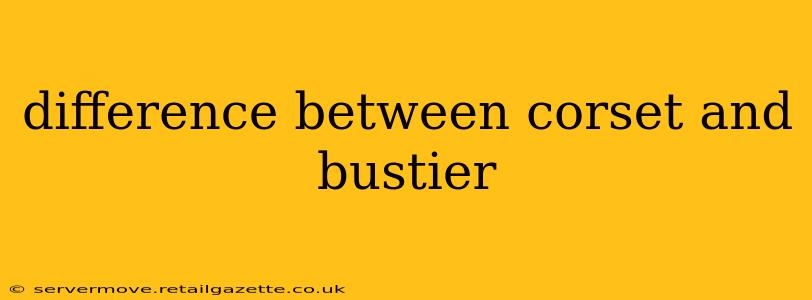The terms "corset" and "bustier" are often used interchangeably, leading to confusion. While both are close-fitting undergarments designed to shape the torso, there are key distinctions in their design, construction, and intended purpose. Understanding these differences can help you choose the right garment for your needs.
What is a Corset?
A corset is a structured undergarment, typically made of boning (such as plastic, steel, or even wood) and strong fabric, designed to dramatically alter the shape of the torso. Historically, corsets were used to create a very specific silhouette, often a dramatically cinched waist and a prominent bustline. Their primary function was body shaping, sometimes to extreme degrees.
Key characteristics of a corset:
- Strong boning: Provides significant structure and support, allowing for significant waist reduction.
- Length: Typically extends from below the bust to the hips, encompassing a large portion of the torso.
- Lacing: Often laced in the back (or sometimes the front) for adjustability and a customized fit. This lacing system is crucial for achieving the desired level of compression.
- Purpose: Primarily designed for body shaping and waist reduction.
What is a Bustier?
A bustier is a more modern, less restrictive garment. It shares some similarities with a corset in its close-fitting design and ability to shape the torso, but it lacks the extreme shaping and compression of a traditional corset. Think of it as a more fashionable, less constricting version.
Key characteristics of a bustier:
- Lighter boning (or none): May use less boning or flexible materials, resulting in less structured support. Some bustiers are even boning-free.
- Shorter length: Generally shorter than a corset, often ending at the natural waist or just below.
- Closure: Typically closes in the front with hooks, zippers, or other fastenings, rather than lacing.
- Purpose: Primarily for shaping, support, and aesthetic appeal, often worn as outerwear or part of a lingerie set.
What are the key differences between a corset and a bustier?
Here's a table summarizing the key differences:
| Feature | Corset | Bustier |
|---|---|---|
| Boning | Strong, rigid boning | Lighter boning or none |
| Length | Extends from below bust to hips | Shorter, often ending at or below waist |
| Closure | Typically laced in the back (or front) | Hooks, zippers, or other front closures |
| Compression | High, significant waist reduction | Low to moderate |
| Purpose | Primarily body shaping | Shaping, support, aesthetic appeal |
| Wear | Often worn as undergarment | Can be worn as undergarment or outerwear |
How tight should a corset or bustier be?
Important Note: Both corsets and bustiers should never be so tight that they restrict breathing or cause discomfort. A properly fitted corset or bustier should be snug but not painful. If you experience pain, dizziness, or shortness of breath, loosen the garment immediately.
Can a bustier be used as a corset?
While a bustier offers some shaping, it cannot replicate the dramatic waist reduction and body-shaping effects of a true corset. Therefore, a bustier cannot be considered a substitute for a corset if the goal is significant waist reduction.
What's the best choice for me?
The best choice depends on your individual needs and preferences. If you're looking for significant waist reduction and strong body shaping, a corset is the better option. If you prefer a more comfortable, less restrictive garment that enhances your figure without significant compression, a bustier is a more suitable choice. Remember to prioritize comfort and proper fit regardless of your choice.
